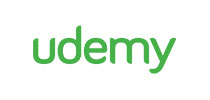در حال حاضر محصولی در سبد خرید شما وجود ندارد.

Extend the Power Platform using code. For people who have already studied for the PL-100 and PL-200 exams. For PL-400
در این روش نیاز به افزودن محصول به سبد خرید و تکمیل اطلاعات نیست و شما پس از وارد کردن ایمیل خود و طی کردن مراحل پرداخت لینک های دریافت محصولات را در ایمیل خود دریافت خواهید کرد.


DP-900: Microsoft Azure Data Fundamentals (Aug 2022 version)

Microsoft Excel for Mac 2: Intermediate to Expert advanced

Microsoft Excel: Pivot Tables, Power Query, Power Pivot/DAX

Microsoft Word 2: from Intermediate to Expert certification

AZ-900: Microsoft Azure Fundamentals (October 2022 version)
-main-resized.jpg)
98-361: اصول توسعه نرم افزار (با استفاده از C#)

PL-900: Microsoft Power Platform Fundamentals

Excel in Microsoft Excel 2: Intermediate to Expert advanced

Microsoft Applied Skills: Build an Azure AI Vision solution

MO-100 Word, MO-200 Excel, MO-300 PowerPoint certifications